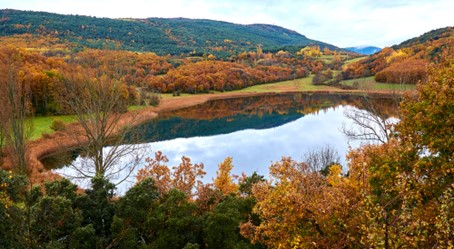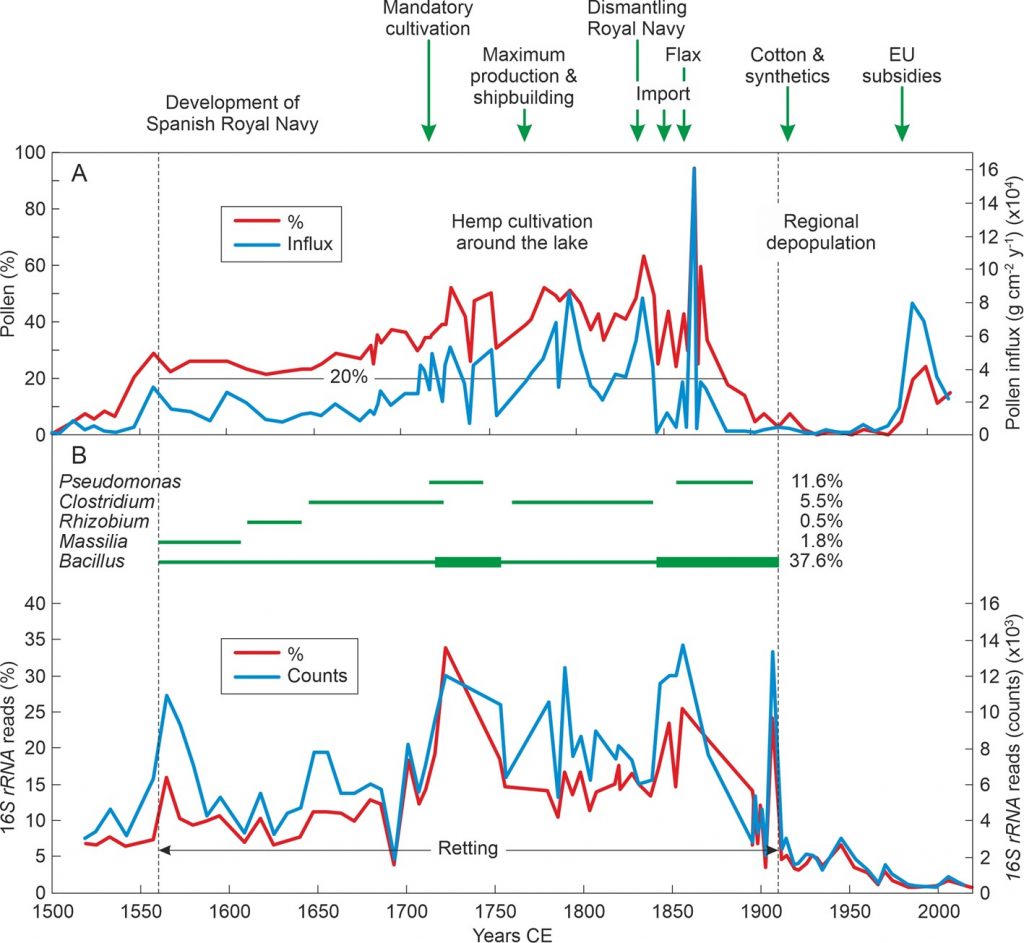Lake Montcortès: four centuries of hemp retting for the Spanish Army
- The Spanish Army, one of the most powerful navies of the Modern Age and a major agent of imperial expansion, relied on large-scale hemp cultivation and retting for the manufacture of ropes and sails.
- The genetic identification of specific retting bacteria in the sediments of Lake Montcortès provides straightforward evidence of increased hemp retting during the maximum development of Spanish Army (16th-19th centuries).
The varved sediments of the Pyrenean Lake Montcortès (Pallars Sobirà) constitute a unique high-resolution (annual) reference section for the last three millennia, which has provided detailed and accurate paleoclimatic, paleoecological and historical information (Rull et al., 2021). An outstanding feature was the significant and maintained increase in Cannabis pollen recorded between 16th and 19th centuries. This was tentatively linked to an eventual intensification of retting activities, usually performed at those times by immersion of hemp plants in natural hardwaters, to separate fibers from the stalk, a maceration process mediated by specific bacteria.

The coincidence of the Cannabis pollen increase with the phase of major development of the Spanish Army, when hemp cultivation and retting to supply the Navy was mandatory across the whole country, supported this interpretation. However, straightforward evidence was lacking, as the anemophilous (wind-dispersed) Cannabis pollen has a high dispersal power, and could have reached the lake from extralocal sources.
A recent study published in Quaternary Science Reviews analyzed the sedimentary 16S rRNA genes from known retting bacteria (Bacillus, Clostridium, Escherichia, Massilia, Methylobacterium, Pseudomonas, Rhizobium and Rhodobacter) and confirmed that these microorganisms experienced a marked increase coinciding with the Cannabis pollen acme and the maximum development of the Spanish Army (Rull et al., 2022).

This is a direct evidence of hemp retting in Lake Montcortès, which is now considered an important retting center for the regional Modern-Age hemp production, as the physicochemical characteristics of the lake waters are especially well suited for the growth of the abovementioned retting bacteria. This is the first unequivocal paleoecological record of hemp retting, as is based on the identification of the bacterial community actually responsible for the maceration process.
References:
Rull, V., Vegas-Vilarrúbia, T., Corella, J.P., Trapote, M.C., Montoya, E., Valero-Garcés, B. 2021. A unique Pyrenean varved record provides a detailed reconstruction of Mediterranean vegetation and land-use dynamics over the last three millennia. Quaternary Science Reviews, 268: 107128.
Rull, V., Sacristán-Soriano, O., Sànchez-Melsió, A., Borrego, C.M., Vegas-Vilarrúbia, T. 2022. Bacterial phylogenetic markers in lake sediments provide direct evidence for historical hemp retting. Quaternary Science Reviews, 295: 107803.














